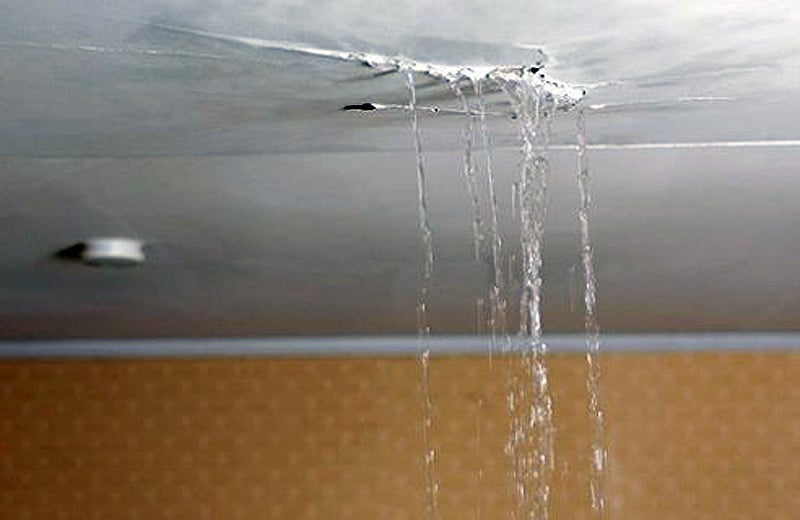Get to Know Half a Dozen Principal Causes Behind Water Seepage Within Your Home
Get to Know Half a Dozen Principal Causes Behind Water Seepage Within Your Home
Blog Article
Are you searching for info about How to detect water leaks in your home?

Leakages not only create waste of water yet can also create unneeded damages to your home and also promote unwanted natural development. Unfortunately, water leaks could go unnoticed because most of the pipework in our residence is concealed. By recognizing as well as looking for daily situations that create leaks, you can shield your residence from future leaks and unnecessary damages. Today, we will certainly look at 6 leakage causes that may be causing your pipes to trickle.
Intruding origins
A lot of water leakages begin outside the residence instead than inside it. You may discover damp patches or sinkholes in your backyard, and that may mean that tree roots are attacking water lines creating water to permeate out.
Corroded water supply
As time passes by, your plumbing system ages and rust such as rust may begin gnawing the pipes. This might be the reason for staining or warping on your pipes. This asks for an assessment with your plumber right away. Take into consideration replacing the pipes given that they are at a greater threat of rust than the newer designs if our plumbing system is old.
Faulty Pipeline Joints
The point at which your pipes connect is regularly the weakest link in the waterline. Pipe joints can wear away in time, resulting in water leaks. Unfortunately, the majority of pipe joints are not easily visible. If you have noisy pipes that make ticking or banging noises, particularly when the hot water is turned on, your pipeline joints are possibly under a lot of stress. It is advisable to have your plumber check your system annually.
Instantaneous temperature adjustments.
Extreme temperature modifications in our pipelines can trigger them to broaden and contract suddenly. This growth and also contraction might trigger splits in the pipes, especially if the temperature level are below freezing. If you kept an eye on how your plumbing works, it would be best. The existence of the formerly pointed out conditions regularly indicates a high risk.
Poor Water Connectors
At times, a leak can be triggered by loosened pipes and pipes that provide your home appliances. In instance of a water links leakage, you might see water running directly from the supply line or pools around your devices.
Obstructed Drains
Clogged drains might be frustrating as well as inconveniencing, but they can in some cases wind up creating an overflow resulting in burst pipes. Maintain getting rid of any type of products that might go down your drains that could obstruct them to stay clear of such inconveniences.
All the above are root causes of leakages however not all water leaks result from plumbing leakages; some leaks might originate from roofing leaks. All leaks need to be fixed quickly to stay clear of water damage.
Leakages not only trigger waste of water however can additionally trigger unnecessary damages to your house and also promote undesirable organic growth. By comprehending as well as looking for daily scenarios that trigger leaks, you can safeguard your residence from future leakages as well as unneeded damages. Today, we will look at six leak creates that might be creating your pipelines to leak.
At times, a leak can be caused by loosened tubes as well as pipes that provide your appliances. In situation of a water links leak, you might notice water running straight from the supply line or pools around your home appliances.
How To Check For Water Leak In Your Home
How To Check for Leaks
The average household's leaks can account for nearly 10,000 gallons of water wasted every year and ten percent of homes have leaks that waste 90 gallons or more per day. Common types of leaks found in the home are worn toilet flappers, dripping faucets, and other leaking valves. These types of leaks are often easy to fix, requiring only a few tools and hardware that can pay for themselves in water savings. Fixing easily corrected household water leaks can save homeowners about 10 percent on their water bills.
To check for leaks in your home, you first need to determine whether you're wasting water and then identify the source of the leak. Here are some tips for finding leaks:
Take a look at your water usage during a colder month, such as January or February. If a family of four exceeds 12,000 gallons per month, there are serious leaks.
Check your water meter before and after a two-hour period when no water is being used. If the meter changes at all, you probably have a leak.
Identify toilet leaks by placing a drop of food coloring in the toilet tank. If any color shows up in the bowl after 10 minutes, you have a leak. (Be sure to flush immediately after the experiment to avoid staining the tank.)
Examine faucet gaskets and pipe fittings for any water on the outside of the pipe to check for surface leaks.
Undetected water leaks can happen without the home or business owner even realizing. If you suspect a water leak, but not able to find the source. It is time to contact a professional water leak detection service, The Leak Doctor.
How To Find a Water Leak In Your Home
https://www.leakdoctor.com/blog/How-To-Check-For-Water-Leak-In-Your-Home_AE197.html

I recently found that blog post on How Fast Water Damage Can Ruin Your Home while doing a search on the internet. Enjoyed our content? Please share it. Help someone else check it out. Thanks for your time spent reading it.
Dial, and relax! Report this page